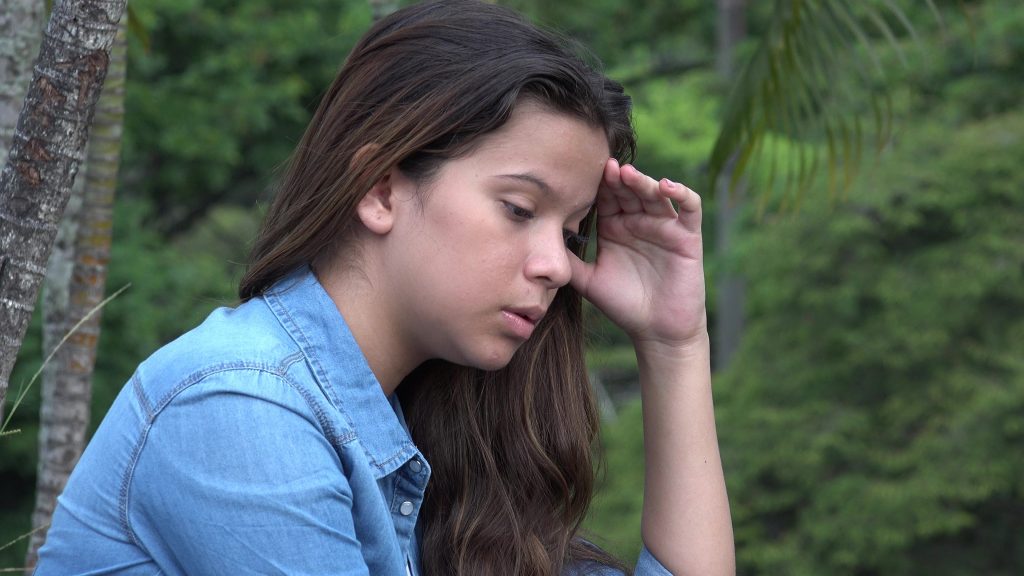Parenting the Anxious Child
We are living in an era of anxiety. In each and every calendar year, one in six grade-school children and one in three teens nationwide has anxiety symptoms that warrant professional attention. While point-prevalence rates in the Orthodox community are unknown, referrals for anxious children certainly are at an all-time high and severity of symptoms is increasing over time.
What should parents do when their children have anxiety? I have yet to meet an anxious child that does not have at least one anxious parent. This happens for a variety of reasons, including the well-known psychological phenomenon of social or vicarious learning—the process by which people adopt behaviors of others they look up to. But before any Jewish parental guilt sets in, consider the positive side of the equation: Overcoming your own anxiety could be all that’s needed for a child to overcome his or hers.
To that end, there is even more good news. The gold standard in anxiety treatment (for adults and children) is a relatively simple and typically brief psychotherapeutic approach known as exposure therapy. While exposure therapy does not work for everyone and some individuals may benefit from medication as well, more than 80 percent of patients respond to treatment such that their symptoms no longer interfere with day-to-day life. In our clinic, we routinely observe such benefits by the end of just seven sessions.
Children need to learn to tolerate uncertainty. . . . Children don’t need to know everything and parents don’t need to explain everything to them!
The main method of exposure therapy is to face one’s fears over and over again until anxiety dissipates. Worrywarts are encouraged to intentionally think the worst for a few minutes each day. Panickers are challenged to panic and “let go” until anxiety subsides on its own (typically panic attacks last less than ten minutes). Individuals with social anxiety are taught to engage with others and subject themselves to the possibility of negative evaluation and judgment. And individuals with obsessive compulsive disorder are pushed to let their distressing thoughts come into their minds without engaging in repetitive compulsive behaviors. Children with any of these symptoms receive the same approach, but there are two main caveats for treatment to be successful: Kids typically require a bit more hand-holding in exposure therapy, and parents need to provide a unified front together with the therapist.
In these and other cases, the mechanisms of effect with exposure therapy are well established. By approaching anxiety-provoking situations, we increase our tolerance of uncertainty and our ability to withstand distress, and thereby strengthen our resilience against anxiety. Tolerating uncertainty is a life skill that, unfortunately, has fallen by the wayside in our current culture. Technological advancements have made us feeble and unable to handle being “out of the know” or out of control. We are so used to having information at our fingertips that when things are uncertain or unknown, we become easily unmoored. As for distress, our culture is all but allergic. Our immediate resolve when faced with strain or pain is to resort to medications, or otherwise do anything we can to stem the tide of discomfort. These macro-level trends could very well be the primary reasons why anxiety is so widely prevalent and severe today.
To these ends, children need to learn to tolerate uncertainty. Beyond exposure therapy, which is typically reserved for cases where anxiety is causing significant distress or impairment for at least a month, it’s advisable to habituate children to not having all information at their fingertips. Putting the ubiquitous issue of technology access aside, children don’t need to know everything and parents don’t need to explain everything to them! Moreover, using the art of surprise has many benefits to children (e.g., taking a family trip without mentioning where you are heading).
Children also need to tolerate discomfort. Simply sitting with distress is a life lesson that can prevent anxiety from getting out of control. The reality of life is that it is uncomfortable at times, and sparing children from any degree of failure ironically increases the likelihood of emotional struggles down the line. Of course, don’t gratuitously cause harm, but when distress occurs it’s important to allow kids to struggle through it as opposed to always providing a bailout. Along these lines, it is important to teach and reinforce and reward bravery, courage, patience and grit. When children (or adults) face their fears, tolerate uncertainty and withstand distress or pain, it’s worthy of recognition and praise, since they are taking active steps to thrive in the era of anxiety.
David H. Rosmarin, PhD, is founder/director of the Center for Anxiety in New York and an assistant professor at Harvard Medical School. His clinical work and research have been featured in Scientific American, the Boston Globe, the Wall Street Journal, and the New York Times.
More in this Section:
The Age of Anxiety by Ahuva Reich

